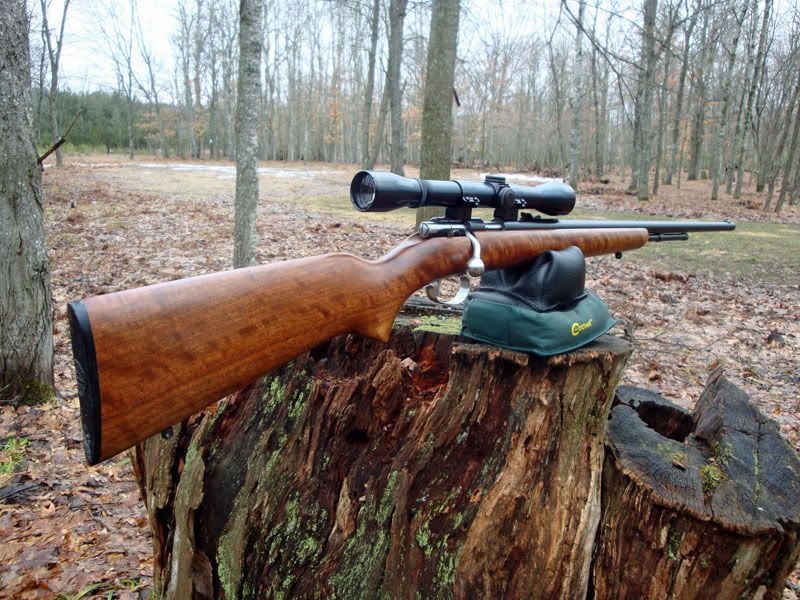That's a surprise, never would have thought Armor-All would be a good finishing ingredient. Is there something about its UV protection characteristic that adds value?
What mixture do you use?
So, I found this because I was looking for tutorials on using tru-oil. It's been around for quite awhile and is generally used for gunstocks (I used it on a muzzleloader my son and I built). I'm not sure where it originally came from but a user called Woodstock63 is generally given credit.
Ok, grab a cup of coffee and sit back. The top three photos are of my Winchester 72A which had a really good finish when I picked it up, for $200, but age was hiding the beauty of the grain. The other was for a customer. Brief History: I've used this process for four years now on Walnut and...

www.rimfirecentral.com
For rifle stocks the process is a little different but I adapted it to knives. The rifle stock process also used special dyes to get the color that old english gunstocks had. I don't do that part.
For knives I do the following
1) Sand to your usual finish (1500 is where I stop). I also get the wood wet and then sand the grain down.
2) 1 light coat of tru-oil. Let it soak in and dry for a bit.
3) Put a few drops of ArmorAll on each side of the scales and rub evenly with your finger to spread it around
4) With a clean t-shirt, get a dime sized amount of tru-oil (i wrap my finger in the tshirt and then dip in the tru-oil)
5) Rub the truoil all over the knife. I generally go in one direction to keep the streaking down
6) The "mix" will take on a whiteish color as you continue to wipe. Keep going until the mix rubs into the wood. You'll know a coat is done when the white is gone and the scales look wet. It's normal for it to look splotchy until you get up higher in the number of coats.
7) The coats dry in about 15 minutes and you can apply the next
8) I do about 7-10 coats and then let it setup over night. I'll lightly hit it with steel wool just to keep things smooth.
9) I do 20 coats on a handle.
I'll often do a few coats and then let it setup over night and then brush it with steel wool again. This puts a nice hard finish on the handle. I coat all my handles - African Blackwood, Ironwood, Maple, cocobolo, Stabilized woods, mammoth, etc and they all get a nice finish on them.

